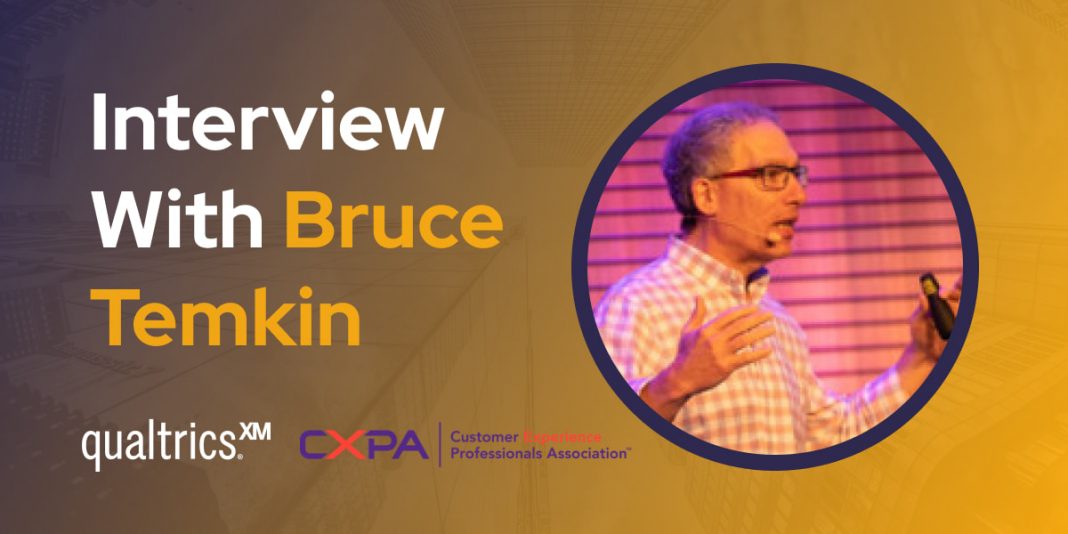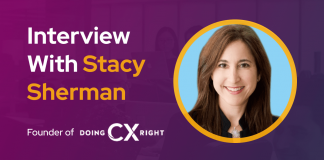Hi Bruce, tell us about yourself and your background.
I’m an engineer by training who is fascinated by how things work. While I started my career building submarine missile systems, I’ve spent the last several decades decoding how people and organizations behave. My work focuses on helping organizations design the right processes, systems, and incentives to drive the outcomes they’re looking for–at scale.
I lead the Qualtrics XM Institute, which provides thought leadership, community, training, and certification on XM best practices and trends. Our goal is to build a global community of XM professionals who are empowered and inspired to radically improve human experiences.
Prior to Qualtrics, I led Temkin Group, which provided research, advisory, and training that helped many of the world’s leading brands build customer loyalty by engaging the hearts and minds of their customers, employees, and partners. I also co-founded and served as Chairman of the Customer Experience Professionals Association. Before Temkin Group, I spent 12 years with Forrester Research.
What is the biggest misunderstanding about customer experience, in your opinion?
People treat customer experience as an activity or an event. That’s like treating COVID as a fever. The ultimate experience an organization delivers externally to customers is a reflection of the culture and operating processes internally. So you can’t just slap a good experience on a poor operating model or through a disengaged workforce.
What are some of the newer CX companies/solutions you’re keeping your eyes on right now?
I think we’ll continue to see a growth of experience data, operational data, and behavioral data, which will open up a path to amazingly valuable insights. But in order to harness those insights, we’ll see more automated analytics, whether it’s AI-based on other mechanisms for spotting meaningful insights. So analytics will remain a hot space. Also, the ability to act on the data has always been the ultimate goal, so new technologies for linking insights into workflows will continue to be a great area of innovation.
Bruce’s tips for improved customer loyalty
What can companies do to improve customer loyalty and retention?
A lot, and too much to answer in a simple question like this. One of the first things for improving loyalty and retention is to better understand your customers. You likely have several types of segments of customers who have different needs and expectations. The better you can look at each of those groups separately, the more effective you will be at mapping out strategies and experiences that work for each of them — across their entire customer journeys.
What do you think is most relevant and why: CSAT (customer satisfaction score), NPS (net promoter score), or CES (customer effort score)?
Great question, but the wrong one. The most relevant metric is whatever one is being used effectively timely by an organization to continuously design and improve the right experiences for the right audiences. Each of those three metrics has strengths and weaknesses. Of those three metrics, CSAt is the most versatile and can implement in many ways across many situations. It’s particularly good for interaction-based measurements.
NPS can be useful in the right setting for a relationship measurement if people focus on driving improvements and not on the actual number (which happens a lot). CES is a good concept, as effort is one of the three elements of an experience (success, effort, and emotion). But I think there are often better ways to measure effort than by using the exact CES measurement.
How can companies better use social media in the era of customer-centricity and personalization?
I think organizations just need to be clear about their social identity. In some cases, there’s no need for an organization to have a strong presence on or actively use social media. If there is a need, then think about two elements — what messages do we want to convey to the world and how are we going to deal with customer and brand issues.
What is your opinion on AI-based chatbots to handle customer support?
I think AI-based chatbots are going to improve as they get smarter and can use more of the data that I talked about earlier. They’re a good option for relatively repetitive, well-understood interactions. As I mentioned earlier, you need to know your customer segments. You may have customers who want more chatbots and others who want nothing to do with them. But they will continue to grow as long as they are designed to serve the customers’ needs and aren’t just an attempt to offload calls into the contact center.
What was the best movie you saw that has come out during this past year?
I have to be honest; I didn’t love this past year’s movies (and I’m a movie lover). But the one I liked the best was “The Sound of Metal.”
Last but not least, what is your favorite CX metric?
I don’t have a favorite CX metric, as they can all be either good or bad based on how and where they’re being used.






